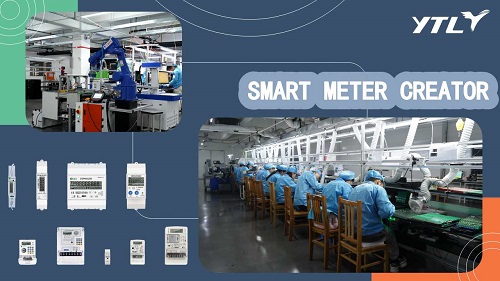Smart meter is an important part of the smart grid, and in addition to basic energy measurement, it gives many intelligent functions. In response to the advocacy of "carbon neutrality", countries have vigorously developed new energy power generation, so smart meter needs to be able to achieve two-way measurement. In terms of user management more automated and controllable,the smart meter needs to have end-user control functions. With the increasing requirements of intelligent, digital, and refined management, the demand for human-computer interaction has become a trend, and smart meter also needs communication functions that can carry out remote two-way data transmission.

Bidirectional metering, load control, and remote two-way communication is the most typical functional requirements of smart meter, and other functions are relatively common in energy meters.
The two-way metering function of the smart meter is mainly used in the grid-connected use of household distributed photovoltaic power generation, and the surplus power is connected to the grid (PV generation is used for the power consumption required by the family itself; when the photovoltaic power generation cannot meet the energy consumption needs of the family, there is city power as a supplement ; after satisfying the consumption of own households, the excess electric energy is integrated into the main grid, and the electricity is sold to the power generation company). In this application scenario, a smart meter is required to simultaneously measure the power consumption of the mains power and the power of the surplus power connected to the grid. Two-way metering means that the input and output power are measured separately.
.jpg)
The load control function of smart meter is mainly used for safe power consumption and orderly power consumption management. The smart meter can set the amount of power allowed to the load, and when the load power exceeds the set threshold, the smart meter automatically disconnects the relay and stops the power supply. In areas or times where electricity consumption is tight, the power consumption during the time is set through the smart meter, and the peak regulation control is automatically carried out. Combined with the remote communication function of smart meter, real-time pull-close can be real-time, and it can be operated during temporary power cut.
The remote two-way data communication function of full smart meter realizes effective and friendly human-computer interaction, and provides data support for the improvement of electricity quality and the analysis and management of reasonable power use.
There are many ways to realize remote communication, direct connection type has GPRS, NB-IOT, WiFi, Ethernet, optical fiber, and direct connection of smart meter data is the system platform. The communication is stable and costly. The centralized controller mode includes PLC, RF, LoRa, Wi-Fine, RS485, Zigbee, etc., through these communication methods to connect the full smart meter with the centralized controller for data. Then there is the concentrator controller to communicate and interact with the system platform through GPRS, Ethernet, etc. Depending on the mode of communication, the number of smart meter managed by a single centralized controller in different installation environments also varies, ranging from tens to hundreds.

The large-scale application of smart meter provides strong data support for the better development of power generation, transmission and consumption, and provides direction for the improvement of power technology and power management. Electric energy measurement is the basis for trade settlement, and the accuracy and fairness of electric energy measurement involve the fundamental interests of the majority of power customers. Electric energy metering is an important part of the production and operation activities of electric power enterprises and the safe operation of power grids. Smart meter has strong anti-interference ability, high measurement accuracy using professional metering chips, and timely feedback of electricity data through communication, which can be well served in the smart grid. Smart meter represents the development direction of intelligent terminals for energy-saving smart grid end-users in the future, ensuring the safe supply of electricity, improving the quality of power supply, and benefiting the people.

 English
English 中文简体
中文简体


.jpg?imageView2/2/w/500/h/500/format/png/q/100)

.jpg?imageView2/2/w/500/h/500/format/png/q/100)

.jpg?imageView2/2/w/500/h/500/format/png/q/100)








